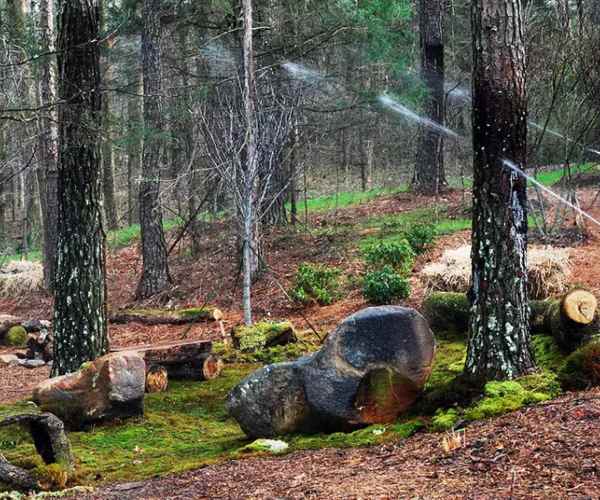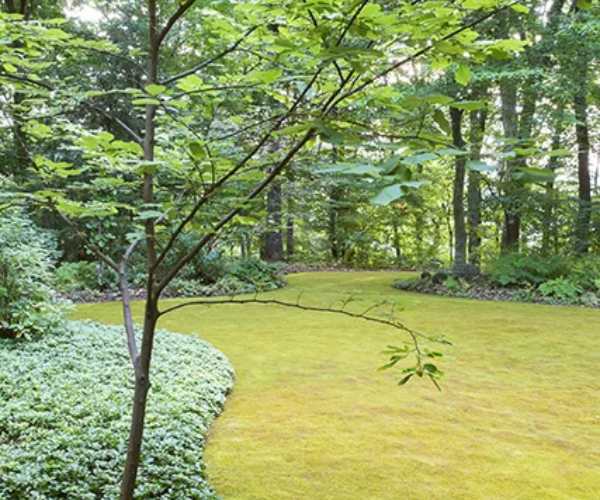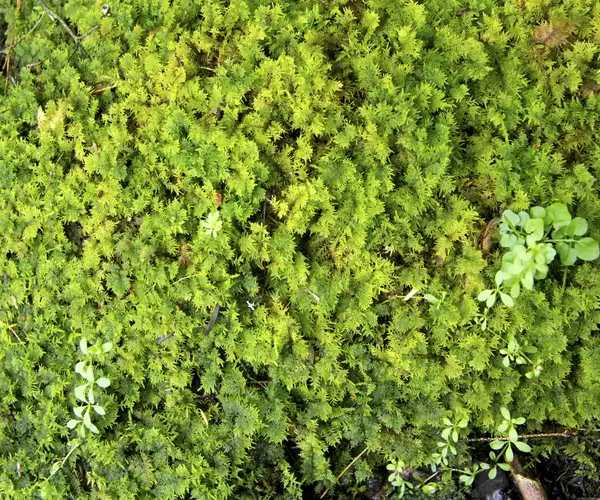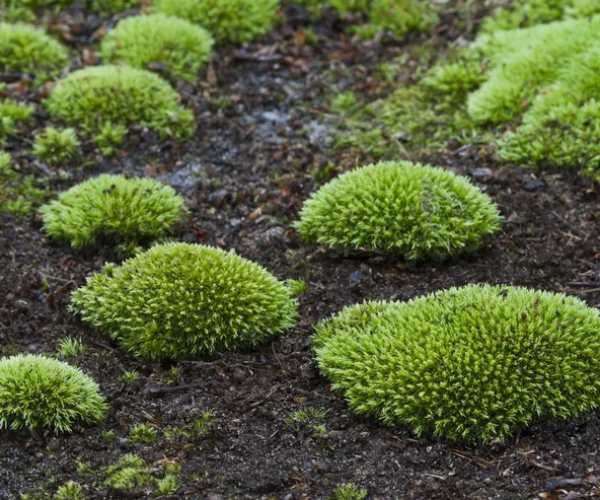If you want a perfect alternative to turf, a moss lawn could be just that. While you may think moss gardening is a weird idea, it has been an important part of Japanese garden design for hundreds of years.
Moss is lush and can be grown anywhere but in environments. It can also do extremely well as a groundcover in places where establishing and maintaining turfgrass is tricky like steep hillslides.
Having moss lawns has plenty of benefits to grass lawns including lower maintenance, staying green year-round (even during winter), and doing well in shady areas. Having said that, you can still grow moss in poor soil conditions too. Unlike other plants, moss doesn’t need frequent watering, fertilizer, pesticides, mowing, aeration, or dethatching like traditional grass lawns.
You can find out which moss lawn is right for you and what is to be done to grow and care for it.
Also, Read Mango Wood – What is it and what are the benefits of Mango wood furniture?
What is a moss lawn?
A moss lawn is a thick stand of moss, a low-growing plant. Since mosses do not have a vascular system of roots, as many other plants do, they absorb water and nutrients through their leaves. They are slow-growing plants. Mosses are propagated through the production of spores and not by seeds.
Contrary to what people say, you can step on a moss lawn. Most types of mosses can withstand light foot traffic. Right after installing the moss lawn, you must walk or sit on it to allow it to attach to the soil. If you want heavy foot traffic across a moss lawn, adding a walkway or stepping stones would be nice. Walking on a moss lawn feels different from walking on a grass lawn. Placing your foot on moss is soft as the surface feels a bit uneven and spongy, unlike a mowed lawn which doesn’t feel soft.
Benefits of a moss lawn
Once established, a moss lawn has more advantages over turfgrass, most of them falling into the low-maintenance category.
- Moss does not require much water or irrigation because it has water-retaining properties.
- You do not need to mow moss lawns, which means no use of fossil fuel, air pollution, or noise pollution from a lawn mower. These plants do not grow more than 4 inches tall.

- You do not need to use fertilizer or pesticides for moss lawns. They can grow in poor soil like compacted or rocky soil and are normally unbothered by pests.
- Moss does extremely well on slopes and steep hillsides where turf would be washed away by erosion. Moss is often the first choice for erosion control.
Disadvantages of a moss lawn
While moss has lots of pros, it also has some cons over turfgrass when used as lawn ground cover.
- Most species of moss love relatively shady conditions. If your lawn gets lots of sunlight, it may be difficult to find a moss suitable for your yard.
- While moss is easy to grow, it is not as durable as a turfgrass lawn, especially a grass lawn planted with species aimed at holding up lots of foot traffic.
- Most moss lawns do best in acidic soil, with a pH of 6.0 or even lower. If your yard has alkaline soil, growing moss is nearly impossible unless you perform extensive soil amendment to lower its pH.
- Most lawns must be kept clean of fallen leaves and other plant wastes. A bagging lawnmower would be helpful but it needs extra maintenance.
- Moss seeds are not available for planting, so moss is normally planted from flats of live moss. While one can order moss from online retailers, it is always more costly than turfgrass.
Which growing location is best for moss lawns?
It is clear that moss lawns are pricier than sowing grass seed or laying sod for a lawn. To make sure your investment is worth it, it is necessary to select the right area for a moss lawn.
Firstly, it is necessary to identify the microclimates in your yard. You have to check the sun exposure in the different areas and whether some deciduous trees or evergreens cast shade and yes how densely, and what time of the year. Are there any moist or shady spots in your yard? Also, paying attention to wind exposure is necessary as the wind can dry out the soil.

Growing mosses is not a daunting task but if this is your first time growing them, you have to make a gradual approach. Start with the corner of your yard, select a moss species that is suitable for sun exposure, and notice how they do for one season before trying to grow a full-scale moss lawn.
Shady areas with acidic soil might be the best place to grow moss lawns. Some types can be grown in sunny locations such as pincushion moss and sun moss.
How to choose the right moss type?
Just like most other plants, sun exposure is necessary when selecting the right moss for a location. While mosses are known to grow in shady areas, some species also grow in sun or partial sun.

Another crucial thing to think about while growing moss is the growth habit. Bryum caespiticium, also known as sidewalk moss, is a sun-tolerant moss. Since it grows in clumps, it is less suitable for a lawn if you want a carpet-like smooth and even surface in your yard.
Here are some selected mosses for lawns in different light conditions:
- Atrichum angustatum (star moss, slender starburst moss, lesser smooth cap moss): It is a compact and slow-growing moss that grows in shade but loves sun or partial shade/partial sun.
- Atrichum undulatum (big star moss, Catherine’s moss, crane’s bill moss, crown moss, starburst moss): This type prefers shade but can also do well in partial shade/partial sun; it needs moist soil and wrinkles up when dry.
- Climacium americanum (tree moss): It also grows in deep shade and partial sun. The tress moss is suitable for waterlogged areas or storm water run-off. One of the taller mosses, growing 4 to 5 inches tall.
- Dicranum scoparium (mood moss, windswept moss, broom moss, footstool moss, rock cap moss): This dense, soft, brilliant green moss grows in shade and partial shade and can withstand drier areas. It thrives in acidic soil.
- Hypnum imponens (sheet moss, feather moss): The sheet moss is a low-growing moss that prefers shade but can also do well in partial sun. It can tolerate light to medium foot traffic.
- Leucobryum albidum (pincushion moss): This versatile moss grows in shade, sun, and partial shade/sun and can tolerate a wide range of temperatures and soil conditions.
- Leucobryum glaucum (cushion moss, white moss): This moss has a round cushion shape that does well in the shade and can tolerate morning sun. It loves sandy soil and its light blue/green color gets a silvery-white cast when dry.
- Polytrichum commune (haircap moss, awned haircap moss, blue moss, blue hairy cap): This versatile moss grows in shade, sun, and partial shade/sun. It is great for erosion on slopes.
How to plant and grow a moss lawn?
-
Check the soil acidity
Most moss types love acidic soil between a pH of 5.0 and 5.5. Before planting moss, it is better to take a soil pH test of the intended planting area. If you are turning your turfgrass lawn into a moss lawn, there might be chances that the soil pH is too alkaline which is not good for moss. If that’s the case, you need to acidify the soil by adding compost, manure, or some soil acidifier.
2. Prepare the soil
After checking and adjusting the pH of the soil, remove any weeds, plant residue, or other debris from the area. Turn over the soil and level and rake it. While the surface must be firm, it still needs to have some texture. It makes the moss create good contact with the soil.

3. Plant the moss
Since moss has no roots, it is not planted in the soil but just placed on top. Press the moss into the soil and secure it with landscaping pins. Light, slow, flat-footed walking on newly laid moss from time to time can help it establish. However, make sure you do not dislodge the patches.
4. Water regularly
Water the planted area properly to the point where it’s soaked but without puddles of standing water. If the moss is very dry, soak it in a bucket of water until it is rehydrated. You do not need to soak the moss if it looks green and alive.
FAQs
Q: Is moss lawn expensive?
A: Yes, a moss lawn is more expensive to install than a lawn. However, the initial investment pays off because once a moss lawn is established, it requires much less upkeep, and maintenance, and is more sustainable than turfgrass.
Q: Are moss lawns safe for dogs?
A: Yes, moss lawns are non-toxic and safe for dogs. Many pet owners prefer this grass alternative as it makes for easier cleanup of animal waste.
Also, Read The 20 Best, Easiest Houseplants That Can Be Grown in Any Home!
